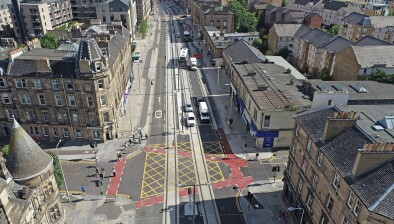Laurice Peverett: The digital office - why buildings need to get smart

Laurice Peverett
Turner & Townsend’s Laurice Peverett reveals why a digital-first approach to building performance in construction can help address societal outcomes within Scotland.
Net-zero ambitions along with post-pandemic working patterns are prompting owners of commercial real estate across Scotland to scrutinise how building performance helps address societal outcomes. A digital-first approach is vital in order to overcome such hurdles. Smart technology can respond to that demand, providing the data to inform new approaches and enabling buildings to be made more energy efficient, improving health and well-being.
Commercial real estate in Scotland is changing as forward-thinking investors, owners and occupiers look to prioritise environmental, social and governance (ESG) objectives, enhance building performance and re-appraise their space requirements to improve the working environment. Buildings need to get smarter by incorporating technologies that will help meet these goals and more.
These factors have been highlighted by changes in working practices in the wake of the pandemic. That has prompted the increased focus on digitalisation, although organisations are likely to have very different technologies in their real estate and their own drivers for action and objectives.
There are good reasons for every organisation to embrace technology, but it needs to be a priority, putting users at the heart, to enable commercial real estate in Scotland to remain relevant and resilient for the future.
What is a smart building?
The term ‘smart building’ is commonly associated with the building management systems that control services, such as lighting and heating, and the array of sensors and monitors gathering data on how a building is functioning and being used.
Deployment of these technologies in an office fit-out is designed to deliver clear benefits for people, enabling more comfortable and productive environments to be created for building users, while also helping to drive more effective use of energy and other resources.
A smart building is much more than its IT hardware, software and sensors. Its intelligence comes from the connectivity of its systems and the data collected on a building’s energy use, temperature, lighting and other everyday operations.
Smarter buildings make sense
Inevitably, cost can be a barrier to making buildings smarter and there can also be questions around introducing new, unfamiliar technologies. But investment can be repaid in many ways, including:
- Driving building performance and environmental objectives
- Enhancing comfort, productivity and well-being for users
- Improving portfolio management Strategy matters
A strategic approach can help organisations to realise these benefits effectively. At Turner & Townsend we work with clients to formulate a strategy, appraising their buildings’ current technology level and business objectives to develop a tailored route map that drives targeted results.
Defining the strategy is important in ensuring buy-in for digitalisation at all levels of an organisation, providing boards with the evidence to support investment and facilities management teams with the confidence to embrace new technology. Once the strategy is in place, our set-up capability paves the way for new technology to be embedded in buildings.
Time for action
Technology is moving fast – it’s now time to embrace a digital-first approach. There’s scope for all commercial landlords to make their buildings smarter and for the broader real estate sector to secure tangible benefits, including ultimately making the built environment better for our economy, society and environment.
- Laurice Peverett is director – digital at Turner & Townsend














